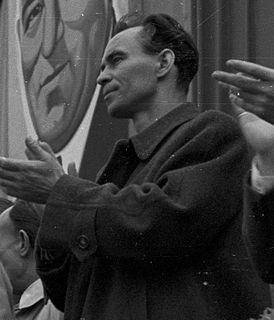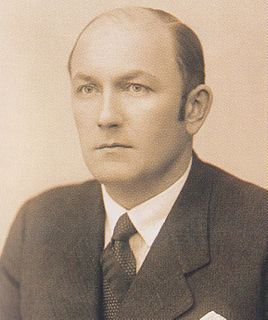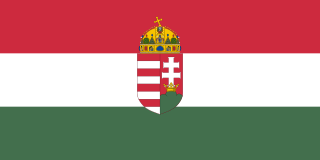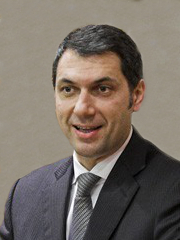| Andor Lázár | |
|---|---|
 | |
| Minister of Justice of Hungary | |
| In office 1 October 1932 –9 March 1938 | |
| Preceded by | Tibor Zsitvay |
| Succeeded by | Ödön Mikecz |
| Personal details | |
| Born | March 8, 1882 Pápa, Austria-Hungary |
| Died | 12 June 1971 (aged 89) Leányfalu, People's Republic of Hungary |
| Political party | Unity Party, Party of National Unity, Party of Hungarian Life |
| Profession | politician, jurist |
Andor Lázár (8 March 1882 – 12 June 1971) was a Hungarian politician and jurist, who served as Minister of Justice between 1932 and 1938.

Hungary is a country in Central Europe. Spanning 93,030 square kilometres (35,920 sq mi) in the Carpathian Basin, it borders Slovakia to the north, Ukraine to the northeast, Austria to the northwest, Romania to the east, Serbia to the south, Croatia to the southwest, and Slovenia to the west. With about 10 million inhabitants, Hungary is a medium-sized member state of the European Union. The official language is Hungarian, which is the most widely spoken Uralic language in the world. Hungary's capital and its largest city and metropolis is Budapest. Other major urban areas include Debrecen, Szeged, Miskolc, Pécs and Győr.
He was born into a Hungarian Calvinist family of noble origin in Pápa. He learnt at the Calvinist College of Pápa and finished law studies in Budapest. During his field trips he visited most of the countries of Europe, but he also went to Canada and the United States. From 1906 he flourished as practitioner and soon he became one of the most considerable and noted lawyers in the capital city. He hulled valuable literature works under his economic studies. His acknowledged writings are the Economic-political studies, the Economy of Austria in the beginnings of the 19th century, The Austrian devaluation and the German and Polish devaluation.

Nobility is a social class in aristocracy, normally ranked immediately under royalty, that possesses more acknowledged privileges and higher social status than most other classes in a society and with membership thereof typically being hereditary. The privileges associated with nobility may constitute substantial advantages over or relative to non-nobles, or may be largely honorary, and vary by country and era. The Medieval chivalric motto "noblesse oblige", meaning literally "nobility obligates", explains that privileges carry a lifelong obligation of duty to uphold various social responsibilities of, e.g., honorable behavior, customary service, or leadership roles or positions, that lives on by a familial or kinship bond.

Pápa[ˈpaːpɒ] is a historical town in Veszprém county, Hungary, located close to the northern edge of the Bakony Hills, and noted for its baroque architecture. With its 32,473 inhabitants (2011), it is the cultural, economic and tourism centre of the region.

Budapest is the capital and the most populous city of Hungary, and the tenth-largest city in the European Union by population within city limits. The city had an estimated population of 1,752,704 in 2016 distributed over a land area of about 525 square kilometres. Budapest is both a city and county, and forms the centre of the Budapest metropolitan area, which has an area of 7,626 square kilometres and a population of 3,303,786, comprising 33 percent of the population of Hungary.
Lázár had a significant role in the foundation of the Hungarian State Banknote Press and creating of the Defence League of the Hungarian Territorial Integrity. His political career was started in the early 1930s, he was a supporter of Gyula Gömbös. He served as state secretary of the Ministry of Defence in 1931. He represented the city of Debrecen from 1931 until 1939 as a member of the governing party (Unity Party then Party of National Unity). When Gömbös was appointed Prime Minister Lázár became Minister of Justice. Instead of the prime Minister's views he supported the conservative forces, as a result he could hold the ministerial position in the next cabinet, which was led by Kálmán Darányi. later he had conflicts with the radicalising Béla Imrédy so he retired from the politics. he continued his lawyer career.

Gyula Gömbös de Jákfa was a Hungarian military officer and politician, and served as Prime Minister of Hungary from 1 October 1932 until his death on 6 October 1936.

Debrecen is Hungary's second largest city after Budapest. It is the regional center of the Northern Great Plain region and the seat of Hajdú-Bihar county. It was the largest Hungarian city in the 18th century and it is one of the Hungarian people's most important cultural centres. Debrecen was also the capital city of Hungary during the revolution in 1848–1849. During the revolution, the dethronement of the Habsburg dynasty was declared in the Reformed Great Church. The city also served as the capital of Hungary by the end of the World War II in 1944–1945. It is home of the University of Debrecen.

Kálmán Darányi de Pusztaszentgyörgy et Tetétlen was a Hungarian politician who served as Prime Minister of Hungary from 1936 to 1938. He also served as Speaker of the House of Representatives of Hungary from 5 December 1938 to 12 June 1939 and from 15 June 1939 to 1 November 1939. Darányi was associated with the radical right in Hungarian politics, and although not sympathetic to the Hungarian fascists, pursued an increasingly authoritarian policy at home, and an alliance with the fascist powers Germany and Italy abroad.
After the Second World War he could not start a political career again. He was interrogated about the Rákosi trial (during his ministership Mátyás Rákosi was arrested and sentenced to imprisonment). Although it turned out that Lázár had no role in this case, in spite of this he was interned to the Great Hungarian Plain in 1951. From 1953 he lived in Leányfalu.
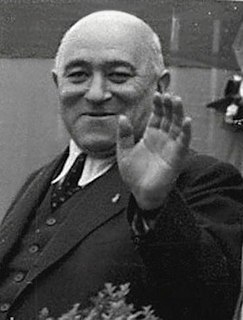
Mátyás Rákosi[ˈmaːcaːʃ ˈraːkoʃi] was a Hungarian communist politician. He was born Mátyás Rosenfeld in Ada. He was the leader of Hungary's Communist Party from 1945 to 1956 — first as General Secretary of the Hungarian Communist Party (1945–1948) and later holding the same post with the Hungarian Working People's Party (1948–1956). As such, from 1949 to 1956, he was the de facto ruler of Communist Hungary. An ardent Stalinist, his government was very loyal to the Soviet Union, and he presided over the mass imprisonment of hundreds of thousands of people and the death of thousands. American journalist John Gunther described Rákosi as "the most malevolent character I ever met in political life."

The Great Hungarian Plain is a plain occupying the majority of Hungary. It is the largest part of the wider Pannonian Plain.
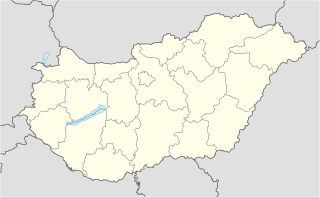
Leányfalu is a riverside village in Pest county, Budapest metropolitan area, Hungary. It is just north of Szentendre located at 47°43′36″N19°5′22″E. Located between the branch of the Small Danube (Kis-Duna) and the spurs of the Visegrád Hills, Leányfalu stretches some 5 kilometres in length. It was declared a holiday resort in 1936 and became an independent municipality in 1949.

